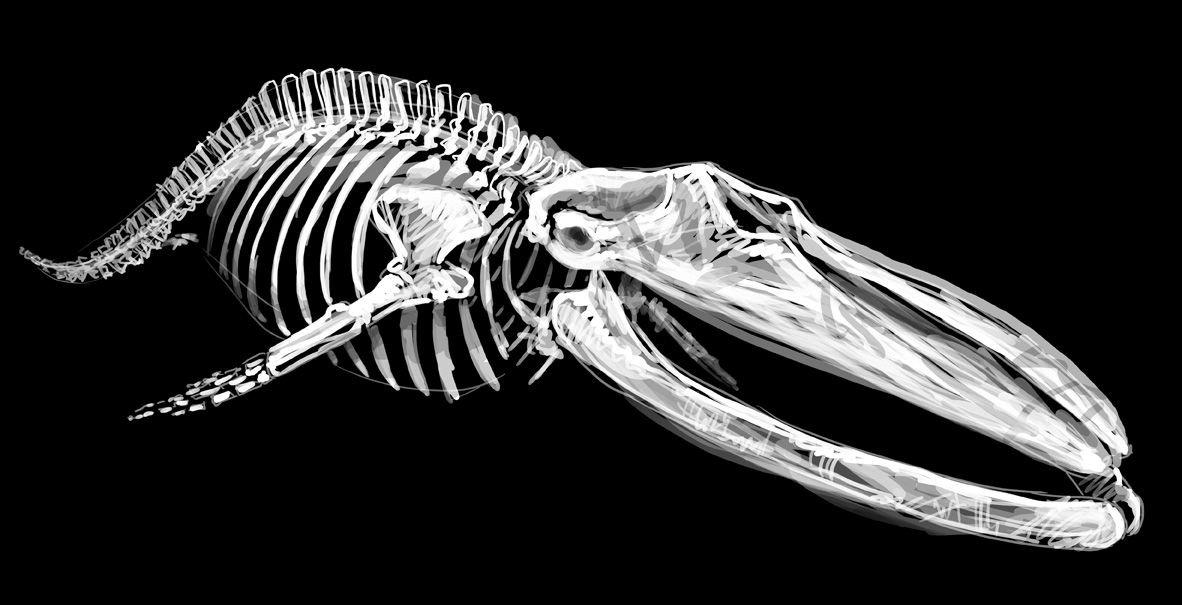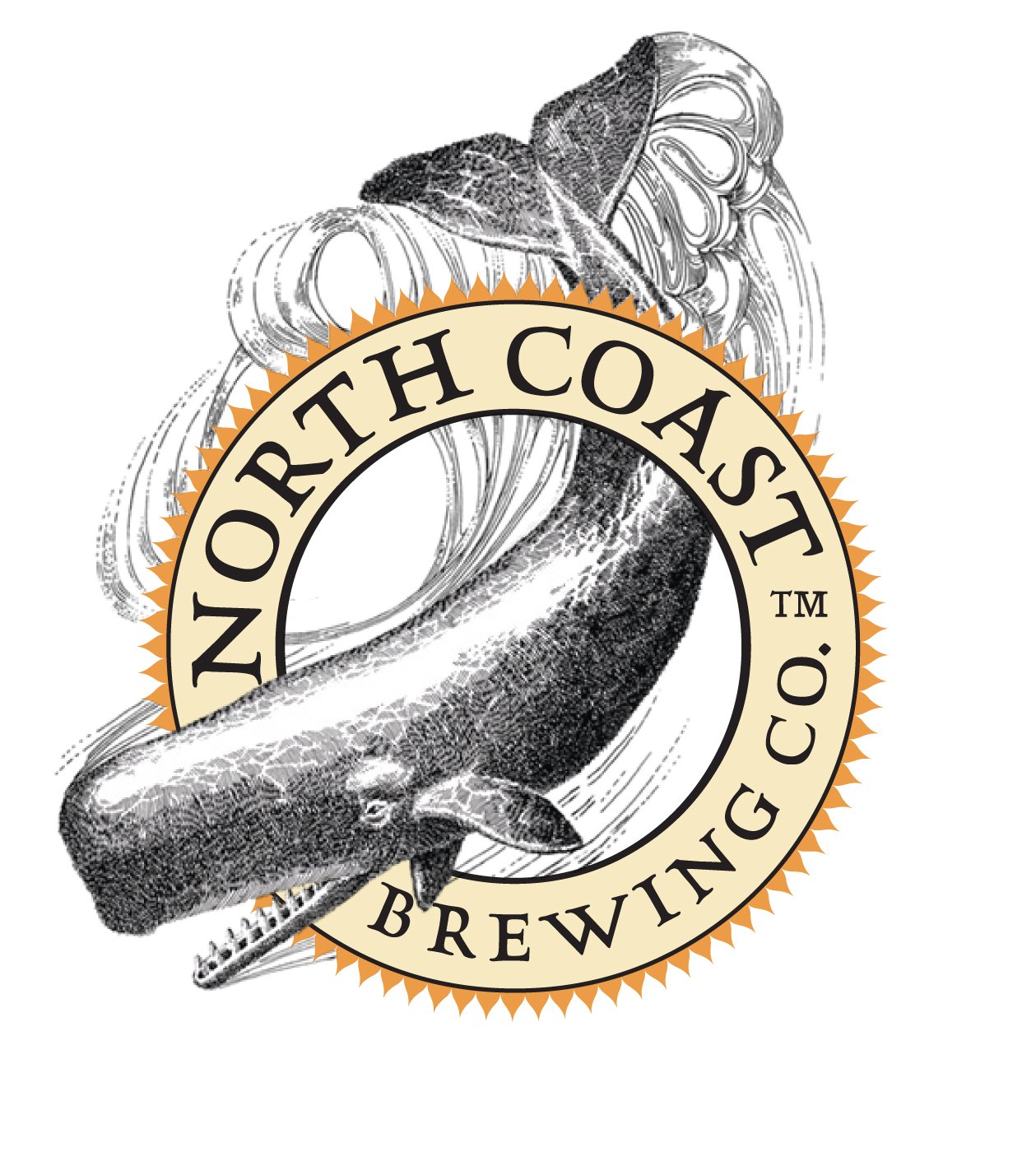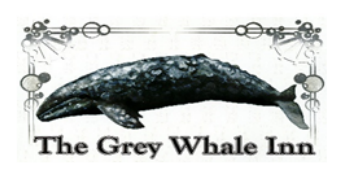
Blue Whale Next Steps
These are the steps needed to restore and articulate our Blue Whale
Cleaning – We have already come a long way in preparing our blue whale skeleton for display (see our story). Members of our community who helped to collect the skeleton flensed away about 70 tons of flesh to extract the bones. We have since relied on composting, insects and soil microorganisms to remove the remaining soft tissues and we’re ready to move on to the next stage.
Degreasing – Whale bones are composed of both compact and cancellous hard tissues. Compact bone is found in the outer regions of bones and in the load-bearing regions of the skeleton. It is solid and dense. Cancellous bone, on the other hand, is sponge-like. It is less rigid and is filled with oil that serves as a nutrient reserve and aids in buoyancy in living whales. Did you know that this oil can comprise up to 40-50% of the weight of a blue whale skeleton??!
Left alone, the oil quickly becomes rancid and unbelievably stinky in saturated whale bones. Understandably, for a public display, 100% of this stinky oil must be removed. Extracting the oil without damaging the hard boney tissues is by far the biggest challenge in the job of preparing a whale skeleton for display and this step will take several months to complete carefully. We are currently working with a team of experienced scientists to plan our degreasing strategy and we are working hard to raise funds to get this step underway.
Restoration – Since our whale encountered a ship’s propeller, several vertebrae and parts of the skull have been damaged. We want the public to know the story of our whale’s death so we plan to do minimal repair to these areas. However, more trauma to the skeleton occurred when the carcass was washed up on the beach since whale skeletons are not built for bearing their own weight on land. We plan to restore these broken bones to their original condition.
There are many great artistic products that are available to articulators and museum conservators to do this kind of restoration. This stage is very fun and will involve learning blue whale anatomy in great detail and calling on a talented team of artists to repair, sculpt and paint the broken areas to restore the skeleton. Next, we’ll be ready to put our bones back together.
Articulation – The world of a whale remains mysterious to most of us since the vast amount of its time is spent below the surface of the ocean. Most historic articulations of large whales portray, well, the dead whale that was found on land. The recent advancement of underwater remote sensing technology has shed much light on the amazingly dynamic lives that whales actually lead under water and off-shore. This has allowed the science of whale skeleton articulation to progress beyond an anatomical exercise into an exciting discipline that fuses science and art.
Using top-quality artistic materials and cutting edge articulation techniques, we plan to design a dynamic, scientifically accurate and elegant display that will breathe life. The exhibit will allow people of all ages to intimately experience the life and ecology of a whale up close. Visitors will connect with the vastness of the marine environment of the Mendocino coast and beyond, and continue toward a deeper learning experience at the Noyo Center.
We are thrilled to have Cetacea Contracting, renowned in modern skeleton articulation techniques, on our team to help lead us through the skeleton building process. Check out their website to see some more examples of dynamic skeleton articulations and see the image below for an idea of the possibilities available for our blue whale skeleton exhibit.
Progress Made
Even without a building, our skeleton has already been the focal point of a pilot marine sciences program for school-aged children. We have also been able to contribute to some exciting scientific research on blue whales.
The hyoid bones were sent to Mount Sinai School of Medicine in New York where scientists are learning that this u-shaped apparatus (sitting under the larynx) is not only used for feeding as commonly thought, but also to move the whale’s head up and down, making it critically important to locomotion.
The ear bones are being used by a neuro-anatomist at Woods Hole Oceanographic Institution to study how behavior is linked to the sensory system in various species. CT and MRI imaging technology can help us “see what the whale hears.”
Blubber samples are being analyzed by researchers to better understand the diet of white sharks, as blue whales are one of the preferred foods of this apex predator.
Baleen samples are undergoing stable isotope analyses to provide specific information on the blue whale’s diet.
Join Us!
If you would like to learn more about this exciting project or see how you can get involved, please contact us or donate today!
Visit our Orca at 338 N. Main St. in Fort Bragg, CA.
OUR TEAM
MIKE DE ROOS & MICHI MAIN: Cetacea, Salt Spring Island, B.C., Canada
As the dynamic team behind the remarkable lunge-feeding blue whale skeleton at University of British Columbia, Mike and Michi have elevated the science of marine skeleton articulation to an art form. Each project features an elegant pose and captivates the imagination of the visitor. Check out their Killer Whale at UBC.
mike@cetacea.ca; michi@cetacea.ca
LEE POST: Homer, Alaska
Better known as the “Boneman,” Lee literally wrote the book on marine mammal skeleton articulation when none existed! Having worked with large museums as well as small marine centers, Lee never fails to deliver a great experience. Check out his team building a Killer Whale in front of the public at the California Academy of Sciences, or raising HOPE in Port Townsend, WA. We will be using Lee’s manual at the workshop.
Mike DeRoos and Michi Main
Lee Post

















